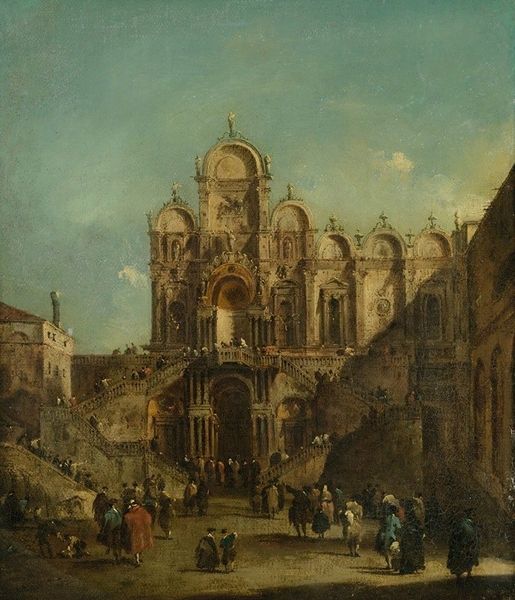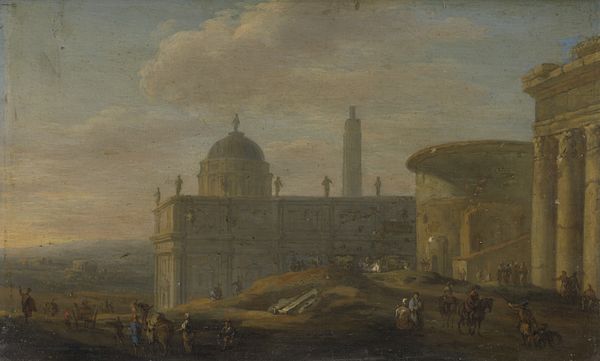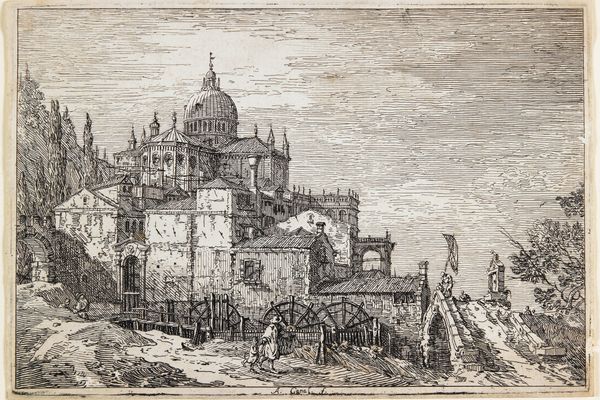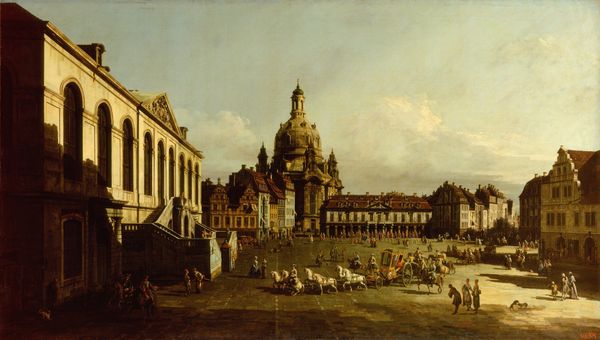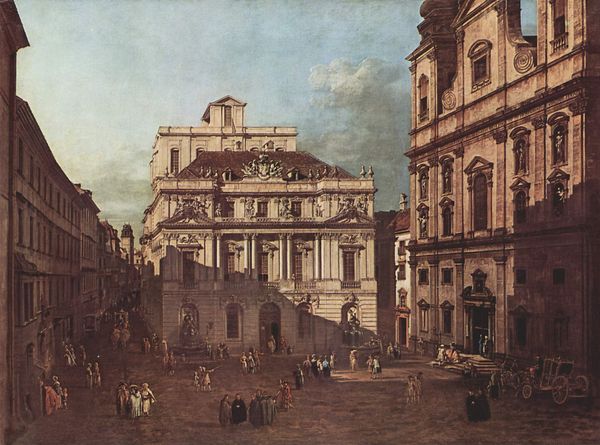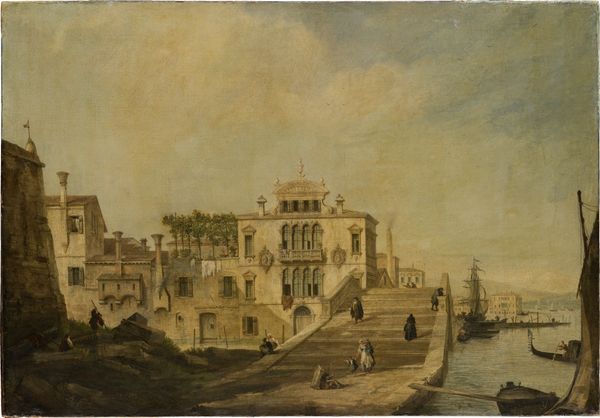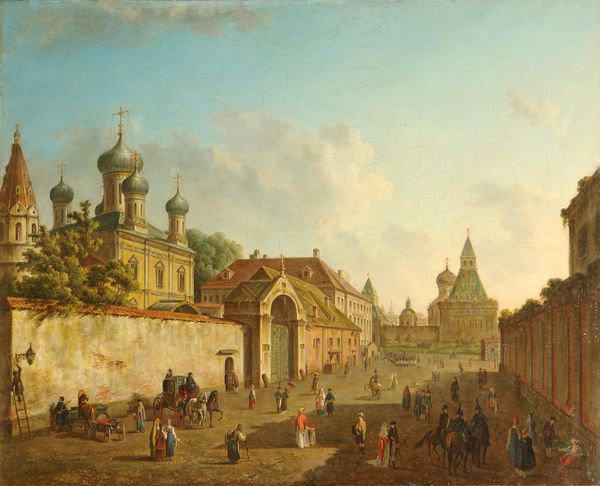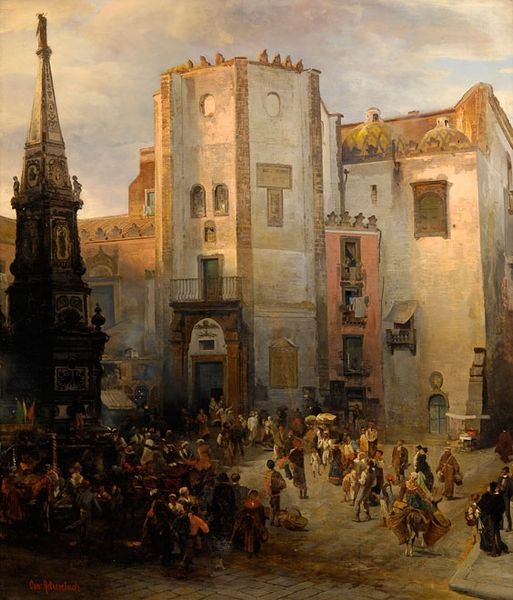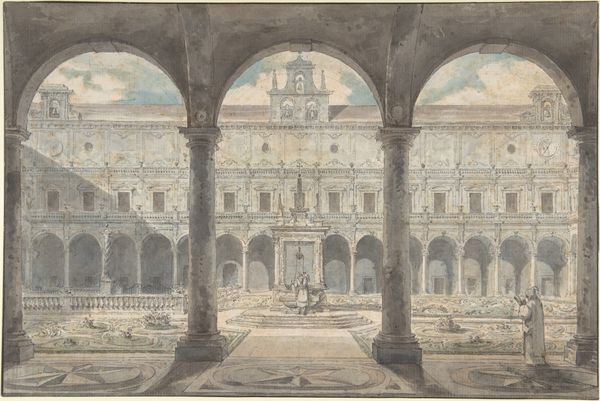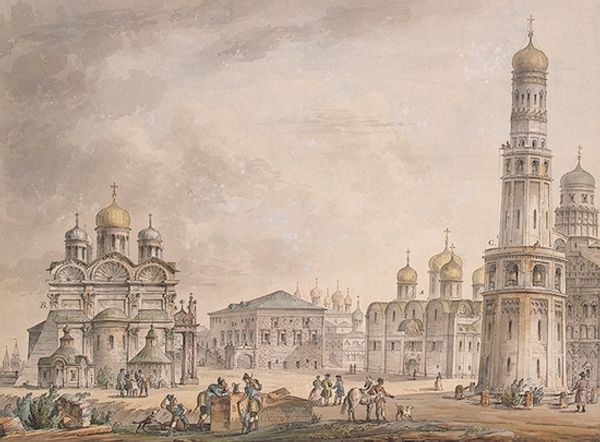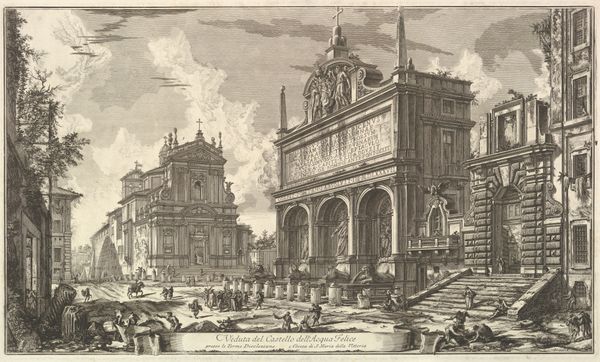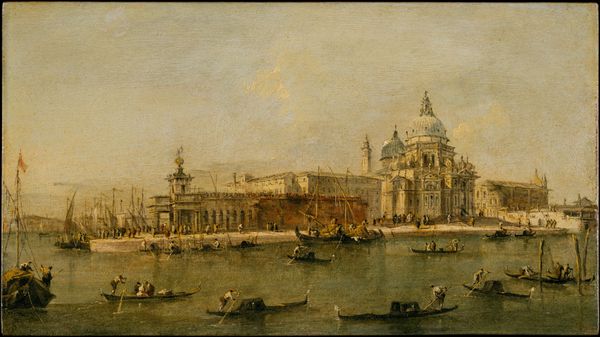
Temporary Tribune in the Campo San Zanipolo, Venice after 1782
0:00
0:00
Dimensions: overall: 37.5 x 31.5 cm (14 3/4 x 12 3/8 in.) framed: 51.1 x 44.7 cm (20 1/8 x 17 5/8 in.)
Copyright: National Gallery of Art: CC0 1.0
Curator: This is Francesco Guardi's "Temporary Tribune in the Campo San Zanipolo, Venice," believed to be painted sometime after 1782. It's an oil on canvas, and exemplifies the Venetian School's mastery of light and atmosphere. Editor: It looks like a theatrical set, doesn’t it? All these tiny people milling about this grand, almost dreamlike structure. There's something about the scale that feels both imposing and… temporary, as the title suggests. Like a film set after everyone has left. Curator: Precisely. The "temporary tribune," was an elaborate, often ephemeral structure erected for special events or religious festivals. These architectural constructions served to showcase power, civic pride and religious authority, designed to impress and inspire awe. The stairs themselves mimic the structure of the Triumphal Arch in Venice which connects architecture with religious ascendance, with earthly triumphs becoming heavenly ascensions. Editor: It makes me wonder what the occasion was. I get a celebratory vibe, but tinged with melancholy – maybe because Guardi captures this with such… wistful brushstrokes. Almost a farewell to an era. The pale tonality helps that feeling, perhaps hinting at the sun setting, a cultural twilight you might say. Curator: It's possible, though his technique certainly leaned toward loose brushwork even earlier in his career. The Rococo influences are evident – light and color over precise lines – that really sets the mood. But yes, these structures and festivals also represented Venice's grand tradition of pageantry, something that was inevitably fading as political realities shifted. The tribune becomes a kind of stage for a performance that's ending. Editor: So, the symbolism layered in this fleeting spectacle adds depth and permanence, and maybe Guardi knew that these celebrations couldn't last forever. The sheer artistry of this transience seems poignant; like catching a shooting star! I think it’s Guardi's loose, shimmering brushwork that really drives that feeling home for me. Curator: Indeed. Guardi immortalizes the feeling, rather than the physical event, creating a historical artifact of Venice itself. Editor: I leave thinking of how temporary celebrations are integral to cultural identity, memory, and the continuous regeneration of human experiences and emotional ties. So next time I am faced with impermanence, I'll remember that very little exists in permanence.
Comments
No comments
Be the first to comment and join the conversation on the ultimate creative platform.
